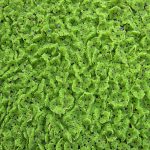
Azolla is one of the cheapest and richest sources of protein in India, boasting high levels of proteins, minerals and fibers.
Azolla is an attractive fodder that increases milk production in dairy cattle. It can be mixed with commercial feed at a ratio of 1:1 or given directly to livestock.
Contents
It is a good source of protein
India’s dairy industry is a major producer of milk, yet there is an acute shortage of dry fodder and concentrate feed. As such, production costs remain high.
Azolla is an excellent source of protein and can be fed to cattle as a feed. It contains proteins, amino acids, vitamins (vitamin A, vitamin B12 and Beta Carotene), growth promoter intermediaries as well as minerals like calcium, phosphorus, copper and iron.
Azolla not only makes an excellent animal feed, but it is also an effective biofertilizer. Not only does it fix atmospheric nitrogen, improve soil health, keep soil moisture levels constant and provide natural fertilizer to soil microbes, it has numerous other beneficial uses too!
Studies conducted on Azolla have demonstrated that it can be added as a nutritional supplement to dairy cows’ diets up to 2 kg daily, increasing nutrients digestibility, decreasing nutrient loss and increasing milk production. Replacing commercial feed with fresh Azolla increased milk yield by 15-20% while cutting feeding costs by 20-30% – effectively cutting production costs in half!
It is a good source of minerals
Azolla is an excellent source of protein, minerals and vitamins. It can be utilized as a cost-effective protein source and may even increase milk production by 7-13%.
Cattle feed of high quality should include essential proteins, calcium, magnesium, phosphorus, copper and manganese. Furthermore, it’s a great source of vitamins, probiotics and bio-polymers.
Fodder is essential for cattle as it helps boost their milk production without increasing feeding expenses. Fresh grass or dry straw make excellent sources of fodder.
Fodder grass or azolla must be produced to meet nutritional needs. Azolla can be grown in nurseries, ponds, canals or cemented tanks depending on availability and affordability.
Cultivating Azolla is a relatively straightforward task with minimal inputs, making it ideal for small and marginal farmers.
It is a good source of vitamins
Fresh Azolla is one of the best green feed sources, boasting a substantial amount of protein as well as essential minerals and vitamins. It can easily replace commercial feeds in livestock production systems.
Cultivating Azolla is a cost-effective practice that can be easily done by farmers in their own ponds using an easy method.
Subudhi & Singh (1978) reported that in India, up to 20% of chicken feed can be replaced with azolla due to its high protein content and low lignin content.
Blue green algae with high nutritional value, protein and minerals. It can be used as a good source of dairy animal feed to reduce expenditure on feed and fodder.
Farmers in NICRA-adopted village Nirmal pimpri, Karnataka are practicing Azolla farming and report that they can save up to Rs 1000 per cow monthly by cutting down on concentrate feed costs.
It is a good source of antioxidants
Recent studies have demonstrated that azolla is an excellent source of antioxidants. This could potentially prevent diseases and enhance animal immunity.
Azolla is also an excellent source of vitamins and minerals, making it suitable for feeding cattle or poultry.
Alternative fodder can be an excellent option to commercial feed. Studies have indicated that it can increase milk production and meat yield in cattle.
Furthermore, it can be utilized to reduce the cost of dairy production.
Azolla is an ideal substitute for commercial fodder due to its high protein and low lignin content.
Studies have demonstrated that azolla can be successfully fed to poultry and other livestock animals. As one of the cheapest sources of protein, it can easily replace concentrates in diets.




